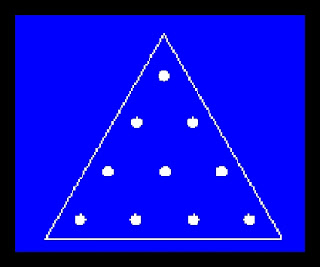The ten fingers symbolize the totality of the universe. Counting on ten fingers makes it "natural" to use a counting system based upon tens. The first letter in the Greek word "deca" (ten) is formed like a triangle (Δ δελτα). The Pythagoreans used pebbles to form their sacred symbol of the tetraktys (1+2+3+4=10): ten pebbles were arranged in a perfect triangle to form four levels: 1, 2, 3 and 4. The Greek word for pebbles,” kalkuli”, is the origin of the word "calculate".
Ten means completeness of order, matter in harmony (4+6). It’s also the start of a new cycle of numbers consisting of two digits (10=1+0=1 / 11=1+1=2 / 12=1+2=3 / 13=1+3=4 …). Ten includes in its digits the created (1), the non-created (0) and the return to unity.
Ten and the Kabbalistic Tree
Kabbalah (from the root KBL, Kof-Beit-Lamed) means “ to receive” within the ancient Hebrew oral tradition. The Kabbalah teaches that the manifest universe arose as a series of emanations or principles from the Ain Soph Aur, the "limitless light” (comparable with the big bang): the ten Sephiroth (enumerations). The first three Sephiroth represent the monad (1- point), the dyad (2 - line) and the triad (3 - triangle), from which the other seven archetypes of creation emerge. The Tree of Life with its ten Sephiroth is the map of Jewish mysticism. The Ten Sephiroth include both masculine and feminine qualities. The Kabbalah pays a great deal of attention to the feminine aspects.
1. Kether (Crown)
The monad, the origin of all numbers and of creation. Also called the Primordial Point, the Point within a Circle. The essence of Kether can’t be comprehended by the human mind, because it isn’t part of a duality. The human mind can only “think” in dualities. Without dualities, thinking is impossible. Kether is so transcendent that it cannot be described.
2. Chokmah (Wisdom)
The result of the first ”swirlings” of the Monad, the masculine-active force, the extension of the point into space, like a phallus. The dynamic force of the universe, the father, Abba.
3. Binah (Understanding)
The feminine-passive potency, the mother, Mara, the great sea. The womb fertilized by Chokmah. Chokmah and Bina are the first polarities of manifestation. They can be compared with the proton and the electron, the building blocks of matter, and with time and space. Like Kether, the origin and reason of the first duality is beyond human understanding. We can merely hypothesize by applying the esoteric law: “so above, so below”. They are transpersonal.
4. Chesed (Mercy)
The “child” of the first polarity, the concretion of the abstract concepts of Kether, Chokmah and Binah, the first Sephira that might be conceived by the human mind, represents love, the reflection of the former three in the world of manifestation.
5. Geburah (Strength)
Represents power and the will.
6. Tiphareth (Beauty)
The self.
7. Netzach (Victory)
Represents feelings, instincts, emotions.
8. Hod (Glory)
The mind, rational thoughts, intellectual abilities.
9. Yesod (Foundation)
The unconscious and intuition.
10. Malkuth (Kingdom)
Represents the body, the senses and the material world.
This is of course a very brief introduction to the Kabbalistic Tree. The Sephiroth have a lot more properties than the ones mentioned. They can be expanded by any analog concept.
We all know the first sentence of the Bible: ”In the beginning God created the heaven and the earth.” This translation is not quite correct. First of all, there is no such word as “God” in the Bible. But let’s concentrate on the first word Berashit (Brasyt) formed (right to left) by the letters Beth, Resh, Aleph, Shin, Yod and Tav. “In the beginning”, the translation of the word Brasyt, is based on a misinterpretation of the original Hebrew text. Every Hebrew letter symbolizes a number and an idea or concept. So each word is a combination of both numbers and ideas, which makes them difficult to translate in other languages. This means that a lot of information in the Bible is coded, disguised as stories.
Beth: the physical support of all that is, anything that “contains”, all dwellings; the cosmic energy projected into actual manifestation.
Resh: the archetype of cosmic containers, the totality of the universe, all existence.
Aleph: the abstract principle that representing all that is as a pulsation of duality, unimaginable by the human mind.
Shin: the movement, impulse, breath behind everything.
Yod: continuity, the manifested existence in time of Aleph.
Tav: the archetype of cosmic existence, in its capacity to resist the life-death duality.
So, instead of “in the beginning”, Brasyt can be translated thus:
“The movement of ‘what cannot be imagined nor understood’, brought into continuous expression the dual principle of life and death, ‘the life-death' pulsation of all existence, by containing it in an infinite array of manifestations.”
Cross-section of human DNA, forming a beautiful ten pointed star
 Tile, Iran, 15th century
Tile, Iran, 15th century
 Mayan numbers
Mayan numbers
Magic square of 10
If nine is one, ten is none, here is all the mystery (Goethe)
























